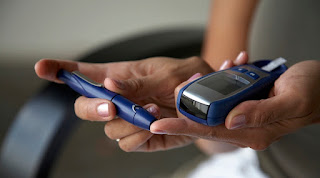LANCET NEW FIVE TYPES OF DIABETES WITH DIFFERENT TREATMENT FOR EACH TYPE
PROF .DRRAM,HIV /AIDS,HEPATITIS ,SEX DISEASES & WEAKNESS expert,New Delhi,India, profdrram@gmail.com,+917838059592,+919832025033,ON WHATSAPP
Diabetes may actually be of five types and not just type 1 (10%) and type 2 (85-90% as people know it as it has been described one with insulin deficiency in childhood or young and another with age and obesity as maturity onset diabetes,as suggests new research published in The Lancet Diabetes & Endocrinology journal.
Recasting adult-onset diabetes into five types could help better tailor early treatment for patients, said the research by scientists from Lund University Diabetes Centre, Sweden, and Institute for Molecular Medicine Finland. The five types found had different characteristics, with different complications, and called for different treatment needs.
According to WHO estimates, India has about 70 million diabetics and is rapidly moving towards becoming the diabetes capital of the world, even though rates of the disease are increasing across the world.
While type 1 diabetes is generally diagnosed in childhood and caused by the body not producing enough insulin, type 2 occurs when the body cannot produce enough insulin to meet increased demand imposed by obesity and insulin resistance (dearth of hormone receptors), and typically occurs later in life. Most diagnosed cases are type 2 (85-90%).
For the new study, in 14,775 patients across Sweden and Finland, the authors analysed six measurements — age at diagnosis, body mass index, long-term glycaemic control, successful functioning of insulin-producing cells in the pancreas, insulin resistance, and presence of auto-antibodies associated with autoimmune diabetes. They also did genetic analyses, and compared disease progression, treatment, and development of complications for each type.
Group 1 SAID (Severe Autoimmune Diabetes) or type I diabetes of Young where Insulin is not in adequate amount and LADA (Latent autoimmune Diabets in Adults),whether started in young or adult GADA antibodies are present,Very less insulin so more metablic control.
GROUP 2 SIDD (Severe Insulin Deficient Diabetes),Pts have high glycosylated haemoglobin,impaired Insulin secretionwith moderate insulin resistance,such patients have highest retinopathy.
GROUP 3 SIRD (Severe Insulin Resistant Diabetes) here obesity is present so more insulin resistance,so more kidney failure much costly for society
GROUP 4 MOD (Mild Obesity Related Diabetes) Obese person having diabetes at young age
GROUP 5 MARD (Mild Age Related Diabetes) is largest group near 40% ,consist of elderly patients.
“Evidence suggests that early treatment for diabetes is crucial to prevent life-shortening complications. More accurately diagnosing diabetes could give us valuable insights into how it will develop over time, allowing us to predict and treat complications before they develop,” said lead author Professor Leif Groop, Lund University Diabetes Centre . “Existing treatment guidelines are limited by the fact they respond to poor metabolic control when it has developed, but do not have the means to predict which patients will need intensified treatment. This study moves us towards a more clinically useful diagnosis, and represents an important step towards precision medicine in diabetes.”
The study could not confirm if the five types have different causes, nor if patients’ type changes over time. Future research will be needed to test and refine the five types.
- Kidney stones universally present hazard in north india,dillution by water prevent it
- Steroid and placebo effect equally for mild persisting asthma with low sputum eosinophils
- Government wants to fix public healthcare staff shortages with ayush docs: will it work?
- Plea in hc for payment of salaries of edmc, north mcd teachers and doctors
- 7 indian pharma companies named in us lawsuit over inflating generic drug prices
- Woman in up dies after explosion in her mouth during treatment,what is diagnosis?
- Woman in up dies after explosion in her mouth during treatment,what is diagnosis?
- Woman in up dies after explosion in her mouth during treatment,what is diagnosis?
- Air pollution ! mothers organising rally in london,anaesthetist choosing gas,will india follow?
- Cardiac arrest is always not sudden as understood -a study


 Comments (
Comments ( Category (
Category ( Views (
Views (